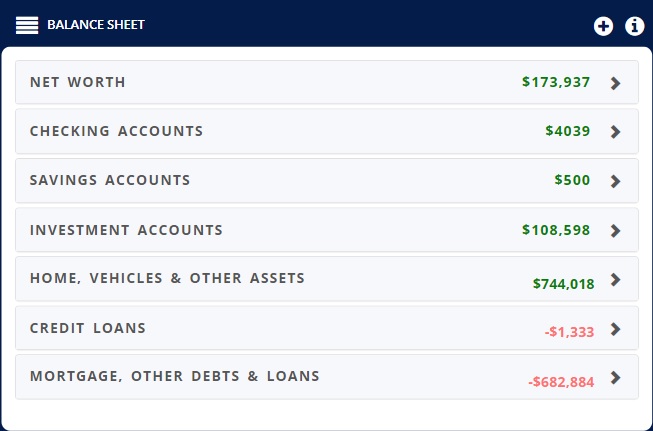From a correction to a collapse, it was falling 25% this year. Significant losses usually rattle confidence, yet this is when the finest discounts become available.
At the commencement of the COVID-19 pandemic, the stock market plummeted as economic activity came to a standstill and uncertainty hovered over everything. Businesses and investors began to make sense of the new conditions and recognize possibilities within a few weeks. Low-interest rates and attractive valuations drew capital back into the stock market. It flowed disproportionately to IT firms, which were less disrupted as people stayed home.
It and a newfound appetite for risk propelled investors to the highest values since the dot-com bubble.
Key Points to remember:
- Nasdaq’s most prominent corporations now account for a more significant share of its overall market valuation than average.
- The top ten stocks account for more than half of the index, while the top five are for about 40% of the market value.
- A smaller number of companies now wield greater power over the Nasdaq.
- It is essential because many firms share commonalities, causing their stocks to move in lockstep. It adds to the turbulence.
Most of the variables causing the market to fall remain in place. Interest rates are rising and are likely to increase more during the year. The first-quarter earnings season is nearly over, and corporate estimates haven’t given Wall Street much hope. Real GDP decreased in the first quarter, raising concerns about a slowing economy. The following data on economic growth isn’t coming until July.
With all that pessimism in the backdrop, stock values have yet to reach must-buy levels.
1. What Exactly Is a Security Trading?

“Security” refers to any fungible, negotiable financial instrument with monetary value. It reflects stock ownership in a publicly listed firm, a creditor connection with a governmental body or corporation represented by holding that entity’s bond, or ownership rights represented by an option.
Securities are typically classified into two types: stocks and debts. On the other hand, some hybrid instruments incorporate aspects of both stocks and obligations.
Following are the Types of Securities:
Equity security is a share of capital stock that reflects the ownership stake held by shareholders in an entity (a business, partnership, or trust). Stocks of capital stock comprise both common and preferred stock.
Equity securities give the holder some pro-rata control of the corporation through voting rights. They are occasionally presented as a kind of payment in kind. In the event of bankruptcy, they only get residual interest once all obligations to creditors have been met.
A debt security is on loan money that must be returned, with terms specifying the loan amount, interest rate, and expiration date.
Debt securities, which include certificates of deposit (CDs), government and corporate bonds, and collateralized securities, usually entitle their holders to regular interest, principal payments, and other contractually defined benefits.
As the name suggests, hybrid securities combine aspects of both debt and equity instruments. Hybrid securities include equity warrants, convertible bonds, and preference shares.
Public traded securities are listed on stock exchanges, where issuers can seek security listings and attract investors by guaranteeing a liquid and regulated trading environment. In recent years, informal electronic trading platforms have become increasingly prevalent, and stocks are often exchanged “over-the-counter” or directly among investors online or over the phone.
An initial public offering (IPO) is a company’s first significant selling of equity securities to the general public. Following an IPO, any newly issued stock still being offered in the primary market is known as a secondary offering. Securities may also be issued privately to a limited and qualified group in what is known as a private placement.
- Companies may sell shares through a combination of public and private placements.
Securities are transferred as assets from one investor to another in the secondary market, often known as the aftermarket: shareholders can sell their securities to other investors for cash and capital gain. As a result, the secondary market supplements the primary market. For privately placed securities, the secondary market is less liquid.
2. What exactly is NASDAQ?
The Nasdaq and the New York Stock Exchange (NYSE) are two securities trading exchanges in the United States. These two markets account for the vast bulk of trading in the United States and globally.
- The Nasdaq Fused is a stock market index comprised of equities traded on the Nasdaq stock exchange. The Nasdaq Composite is one of the most broadly watched stock indexes in the United States. It is frequently cited by market analysts, the Dow Jones Industrial Average and the S&.
The Nasdaq Composite Index is generally seen as a good measure of how well the technology industry is functioning since it includes a large concentration of businesses in the technology sector, particularly of the younger, fast-growing sort.
As of March 2022, there are 3,626 Nasdaq-listed stocks. However, as previously stated, not every form of asset is included in the Nasdaq Composite index.
As of December 31, 2021, there were 3,417 specific equities issued by 3,365 businesses in the index, according to the information sheet for the Fidelity Nasdaq Composite Index Fund (NASDAQMUTFUND: FNCMX), a mutual fund that follows the index.
- However, because the index is weighted by market capitalization and some of the world’s largest corporations are Nasdaq-listed, the index is reasonably top-heavy.
- Apple (NASDAQ:AAPL)
- Microsoft (NASDAQ:MSFT)
- Amazon (NASDAQ:AMZN)
- Meta (NASDAQ:META)
- Alphabet (C shares) (NASDAQ:GOOG)
- Tesla (NASDAQ:TSLA)
- Alphabet (A shares) (NASDAQ:GOOGL)
- NVIDIA (NASDAQ:NVDA)
- Paypal (NASDAQ:PYPL)
- Intel (NASDAQ:INTC)
Another highly watched Nasdaq-based index is the Nasdaq 100. This index, likewise market-cap weighted, is sometimes mistaken for the Nasdaq Composite. Still, there is a significant distinction to be aware of.
Instead of incorporating all of the Nasdaq common stocks, the Nasdaq 100 only covers the equities of the 100 most giant nonfinancial corporations listed. The Nasdaq 100 firms account for more than 90% of the weight of the Nasdaq Composite Index.
It is a statistical index that measures the performance of America’s 500 most extensive stocks. The S&P 500 is a benchmark against which portfolio performance may be measured in this context.
When choosing equities one at a time, it might be not easy to diversify a portfolio appropriately. Investment in a mutual fund or an ETF that tracks a larger index fund is a simple approach to overcoming that problem and diversifying. Diversification is recommended by Modern Portfolio Theory (MPT) to decrease risk.
Index funds characteristically invest in all of the index components they follow, and they employ fund managers whose goal is to ensure that the benchmark fund outperforms the index.
Warren Buffett, widely observed as the most successful stock investor of all time, has stated that index funds are the most incredible investing option for most Americans.
The most straightforward approach to investing in the Nasdaq Composite Index is to purchase an index fund, a mutual fund or an exchange-traded vehicle that passively tracks the index. An index fund is a type of mutual fund that invests in all of the components of a stock index at the same weights as the index.
3. How to Invest in NASDAQ?

Trading securities encompass debt and equity securities that an organization intends to sell in the near term for a profit generated by rises in the price of the securities. It is the most popular categorization for securities investments.
Some indices concentrate on a smaller segment of the market. The Nasdaq stock index, for example, closely monitors the technology sector. So, if you want to know how technology businesses are doing, check the Nasdaq index.
- Indexes also vary in size, with some covering only a few stocks and others indexing hundreds.
- Because various investors are interested in different areas, each index serves a distinct function.
Following are the steps to Invest in NASDAQ:
One of the qualities of an online broker is their connection to exchanges. Because they do not have access to the NASDAQ, not all brokers enable you to purchase Nasdaq shares. Needless to say, you will require a broker to access this exchange.
The second most significant aspect of a broker is that it fits you.
You must establish an account after locating your internet broker. This is similar to a standard bank account, and opening one is generally done entirely online.
Some brokers make it as simple as registering a new Gmail account, while others need a few days before doing a background check on you.
You will be paying cash for those Nasdaq stocks. This money must first be remitted (deposited) to your broker. It is typically straightforward and quick, even more, accessible than creating a brokerage account.
The most typical deposit methods are bank transfer and credit/debit card.
You have the account, the cash, and the goal share price. The final step is to click the purchase button!
You log in to your brokerage, search for Nasdaq shares, enter the number of shares you want to buy, and then click accept to complete the transaction.
You are not done after purchasing your Nasdaq shares. It is now critical to keep track of your finances. This essentially implies adhering to your financial strategy. Suppose you bought the Nasdaq share to hold it for a more extended period.
In that case, you may attend the annual meeting and gather all of the company’s news and information.
Trading is often conducted through an established stock market, which acts as a middleman between a buyer and seller; however, direct purchase and sale transactions with counterparties are also feasible.
Conclusion
Investing in index funds is one of the simplest and most economical ways for investors to acquire wealth. Index funds may crack your investment into a significant nest egg over time by simply imitating the outstanding success of the financial markets – and best of all, you don’t get to become a stock market specialist.
- Reduce the amount of time you employ investigating specific stocks.
- You can invest with a lesser level of risk.
- It is significantly less costly. Index funds are accessible for a wide range of investing purposes.
You may always have a mix of index funds and other assets to compensate for these disadvantages. However, if you intend to use index funds exclusively, you must accept their restrictions.
- You will never outperform the market.
- You will not always own stocks that you enjoy. You have no loss protection.







 Our users have reported an average of $5K+ positive impact on their personal finances
Our users have reported an average of $5K+ positive impact on their personal finances
